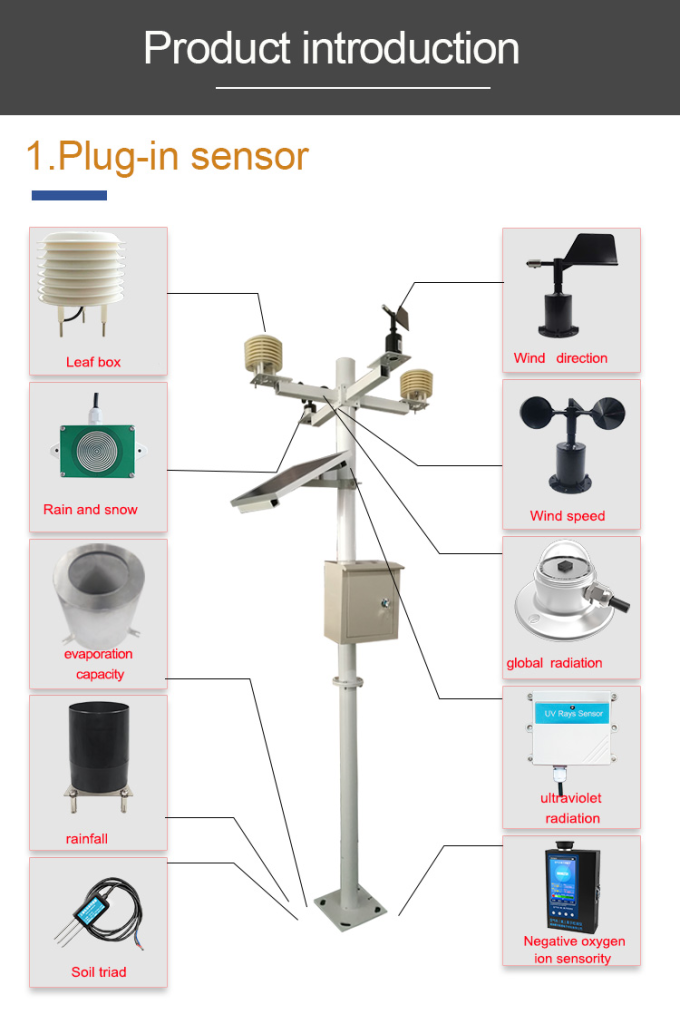To understand weather patterns, scientists and meteorologists rely on a variety of weather instruments. These weather instruments play a vital role in monitoring and measuring different atmospheric conditions. In this article, we will delve into some common weather instruments, their functions, and how they contribute to our understanding of the elements.

some common weather instruments
One of the most widely recognized weather instruments is the thermometer. It measures temperature, a fundamental aspect of weather prediction. Traditional thermometers consist of a glass tube filled with mercury or alcohol. As temperature changes, the liquid expands or contracts, causing the level to rise or fall on a calibrated scale. Modern thermometers often use digital displays or infrared technology for quicker and more accurate readings.

Another crucial instrument in weather forecasting is the barometer. Barometers measure air pressure, which provides valuable insights into current and future weather conditions. A barometer typically consists of a glass tube filled with mercury or aneroid capsules that flex in response to atmospheric pressure changes. By monitoring pressure trends, meteorologists can determine if conditions are stable or changing, which aids in predicting weather patterns.
To measure humidity, meteorologists employ a hygrometer. Humidity refers to the amount of moisture present in the air. Hygrometers come in various forms, including electronic sensors and hair tension devices. Electronic sensors measure humidity by assessing the capacitance or resistance of the air, while hair tension hygrometers rely on the expansion or contraction of a human or animal hair strand with changes in humidity. The knowledge of humidity assists in forecasting rainfall, fog, and even the comfort and health of humans.
The wind direction and speed are crucial factors in understanding weather patterns. Anemometers are instruments designed to measure wind speed, while wind vanes determine wind direction. Anemometers often feature rotating cups or a propeller that spins faster with increased wind speed. The rotation is then converted into a numerical value for wind speed measurement. Wind vanes, on the other hand, consist of a pointer that aligns with the wind’s direction. Together, these instruments provide meteorologists with valuable data for assessing wind patterns in different regions.
Monitoring precipitation is integral to weather analysis. Rain gauges are common instruments used to measure the amount of rain or liquid precipitation over a specific period. Traditional rain gauges have a cylindrical or funnel-shaped collector with calibration markings that enable precise measurement. More advanced rain gauges may utilize electronic sensors that automatically record and transmit precipitation data. This information is vital for drought predictions, flood monitoring, and water resource management.
In recent years, weather technology has seen significant advancements, leading to the development of weather stations. Weather stations combine multiple instruments into a single device, making it easier to gather comprehensive weather data. These stations typically include thermometers, barometers, hygrometers, anemometers, and rain gauges. Some weather stations even integrate additional sensors for measuring UV radiation, solar radiation, and soil moisture. By continuously collecting data from multiple sources, weather stations provide a more complete understanding of local weather conditions.
conclusion
Weather instruments are essential tools for studying meteorological conditions. From thermometers to anemometers and rain gauges, each instrument serves a specific purpose in monitoring and measuring different elements of weather. By utilizing these instruments, meteorologists can analyze and interpret data to make accurate weather forecasts. As technology continues to advance, so will the efficiency and precision of weather instruments, providing us with a deeper understanding of the ever-changing nature of our atmosphere.
